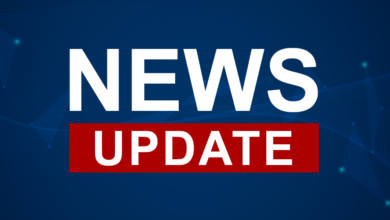Agricultural Equipment Market: Innovations and Trends Shaping the Future

The agricultural equipment market is undergoing a profound transformation, driven by technological advancements, changing agricultural practices, and the need for increased efficiency and sustainability. This blog explores the current trends and innovations in the agricultural equipment sector and examines how they are shaping the future of farming.
Technological Advancements Driving Innovation
Technological advancements have revolutionized the agricultural equipment industry, enhancing productivity, reducing labor costs, and improving precision in farming practices. Key innovations include:
- Precision Agriculture: Precision agriculture technologies, such as GPS guidance systems, sensors, and drones, have enabled farmers to optimize inputs like seeds, fertilizers, and water. These technologies provide real-time data and insights that help farmers make informed decisions, resulting in higher yields and reduced environmental impact.
- Automation and Robotics: Automation and robotics are increasingly being integrated into agricultural equipment. This includes autonomous tractors, robotic harvesters, and automated milking systems. These technologies not only improve efficiency but also address labor shortages and reduce the physical demands on farmers.
- IoT and Big Data Analytics: The Internet of Things (IoT) and big data analytics play a crucial role in modern agriculture. IoT sensors collect data on soil health, crop growth, and machinery performance, while analytics platforms process this data to provide actionable insights. Farmers can optimize their operations, predict crop yields, and implement preventive maintenance strategies.
Market Overview
The agricultural equipment market plays a pivotal role in modernizing and enhancing agricultural practices worldwide. This market encompasses a wide array of machinery, tools, and equipment designed to facilitate various agricultural operations, from planting and harvesting to irrigation and livestock management.
The global agricultural equipment market is expected to grow significantly, driven by factors such as technological advancements, increasing mechanization in agriculture, rising labor costs, and the need for higher productivity to meet global food demand. According to Persistence Market Research’s projections, the global agricultural equipment market is estimated to value at US$169.0 Bn by the end of 2031 from US$120.1 Bn in 2024. The market is predicted to secure a CAGR of 5.0% in the forthcoming years from 2024 to 2031.
MORE BY PERSISTENCE MARKET RESEARCH
Changing Agricultural Practices
The adoption of sustainable agricultural practices is a significant trend influencing the agricultural equipment market. Consumers and governments are increasingly demanding environmentally friendly farming methods, leading to:
- Demand for Sustainable Equipment: There is a growing demand for agricultural equipment that reduces greenhouse gas emissions, minimizes soil erosion, and conserves water. Manufacturers are developing eco-friendly machinery and implements, such as electric tractors and low-emission sprayers, to meet these requirements.
- Adoption of Precision Farming Techniques: Precision farming techniques, enabled by advanced equipment, promote resource efficiency and sustainability. This includes practices like conservation tillage, cover cropping, and integrated pest management, which reduce the environmental footprint of agriculture while maintaining or improving productivity.
Market Trends and Opportunities
The agricultural equipment market is expanding rapidly, driven by global population growth and the increasing demand for food security. Key trends and opportunities include:
- Emerging Markets: Developing countries are witnessing significant growth in their agricultural sectors, leading to increased demand for modern agricultural equipment. Manufacturers are focusing on these markets to capitalize on the rising demand for mechanization and productivity-enhancing technologies.
- Smart Farming Solutions: Smart farming solutions, which integrate data-driven technologies with agricultural equipment, are gaining traction. These solutions enable farmers to monitor and manage their operations remotely, optimize resource use, and improve decision-making.
- Vertical Farming and Urban Agriculture: The rise of vertical farming and urban agriculture is driving demand for specialized equipment tailored to indoor and urban environments. This includes vertical farming systems, hydroponic equipment, and LED lighting solutions that support year-round crop production in urban settings.
Challenges in the Agricultural Equipment Market
Despite the opportunities, the agricultural equipment market faces several challenges:
- High Initial Costs: The high cost of advanced agricultural equipment, such as precision farming technologies and autonomous machinery, can be a barrier to adoption for small and medium-sized farms.
- Lack of Infrastructure and Connectivity: Access to reliable infrastructure, including electricity and internet connectivity, is essential for the effective deployment of digital farming technologies in rural areas.
- Regulatory and Policy Issues: Regulatory frameworks and policies related to agricultural equipment, including emissions standards and safety regulations, vary by region and can impact market dynamics.
Future Outlook
The future of the agricultural equipment market looks promising, with continued innovation and investment in technologies that improve productivity, sustainability, and farm profitability. Key areas of growth include:
- Advanced Robotics and Automation: Continued development of autonomous and robotic systems that enhance efficiency and reduce labor requirements.
- Digital Farming Platforms: Expansion of IoT and big data analytics solutions that provide farmers with actionable insights and decision support tools.
- Sustainable Equipment: Development of environmentally friendly machinery that meets regulatory requirements and consumer preferences for sustainable farming practices.
In conclusion, the agricultural equipment market is evolving rapidly, driven by technological advancements and changing agricultural practices. Innovations in precision agriculture, automation, and sustainability are transforming the industry, offering opportunities for growth and efficiency improvements. As farmers continue to embrace these technologies, the future of agriculture looks increasingly digital, connected, and sustainable.
Read More
